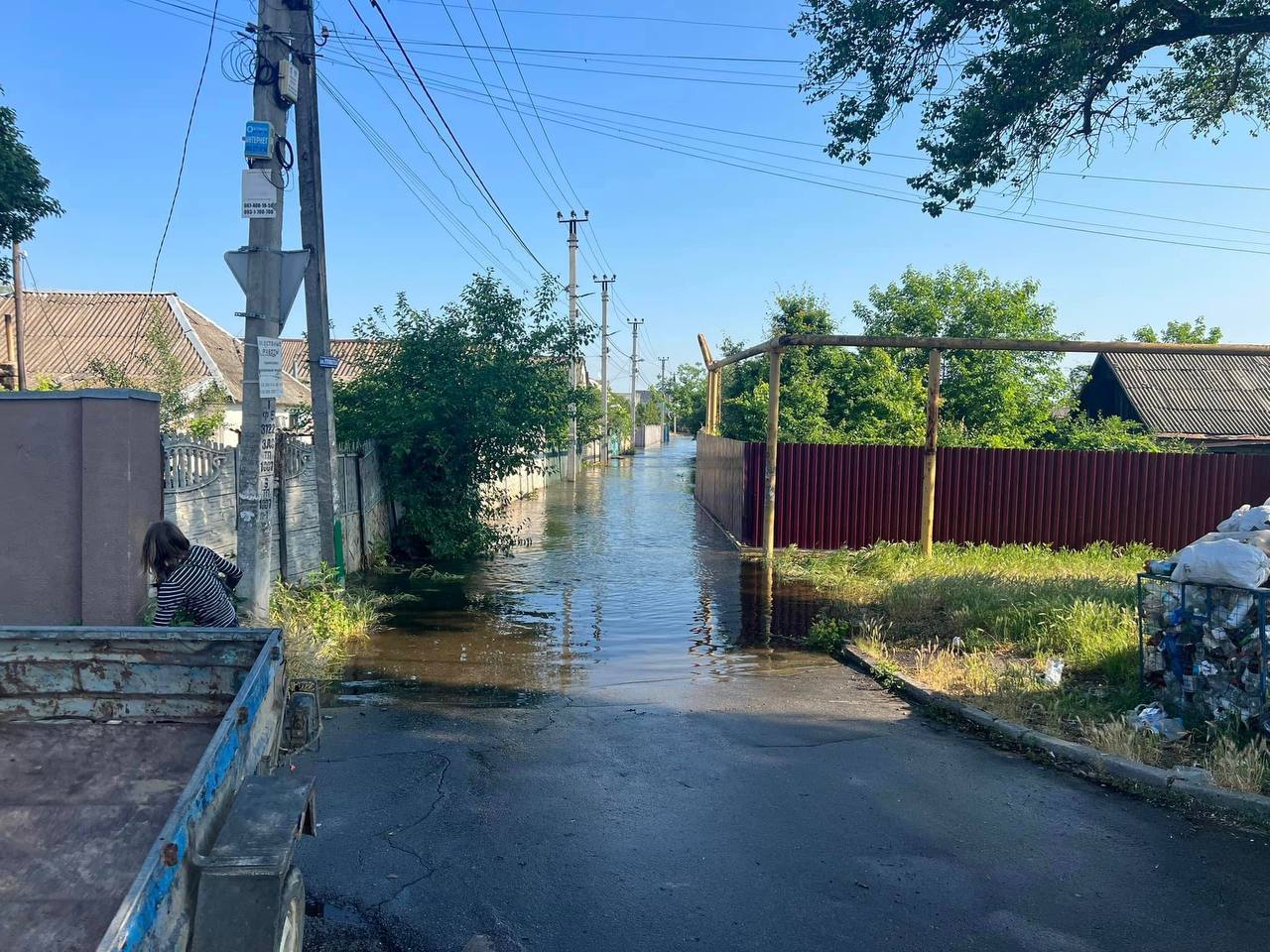After destroying the Nova Kakhovka dam and stranding thousands of Ukrainians in the catastrophic flood zone, Russians prevented people in occupied territories from fleeing or rescuing others, multiple accounts revealed on June 7.
About 80 settlements and 16,000 people were estimated to be in the critical areas. The lower eastern bank of the Dnipro, occupied by Russia, suffered the worst of the damage.
The town of Hola Prystan was 85% flooded by mid-afternoon and was expected to be completely flooded by the end of the day, with the water reaching 3.5 meters, according to the city’s military administration director Svitlana Linnik. There were 6,000 people in the city when the dam was blown up.
Oleshky, a city with a pre-invasion population of 24,000 people, is likely to be completely submerged as well. It’s expected to be days before the waters recede, letting people take stock of the damage. Many lost all their belongings, including their legal documents.
Social media is flooded with photos and videos of people sitting on rooftops as the water laps around them, with dwindling supplies and no way to escape. A woman pulling a small, frightened dog out of the murky floodwaters before trying to save what things she could. Occasional boats pass between the roofs and treetops that break through the surface.
The Kyiv Independent spoke with family members of people living under Russian occupation in Oleshky and collected accounts that residents posted on social media from the affected occupied areas.
They spoke of being trapped, either lacking the vehicles or fuel to escape or being blocked from leaving by the Russian occupying forces.
Russian news service TASS at 9:10 a.m. on June 7 claimed that 1,300 people were evacuated. Russia’s top collaborator in Kherson Oblast, Volodymyr Saldo, stated that people who endured material losses will get financial aid and that children are being transported to occupied Kherson Oblast and Crimea to “good holiday camps.”
But people in the area or their relatives said there was no evacuation to speak of whatsoever.
“Right now, many people are sitting on the roofs in Oleshky,” said Oleh – he has an aunt and a nephew with disabilities in the town. He described what they had been doing until their eventual rescue.
“They have neither food nor water. People helped to carry the son upstairs, and they did not take anything with them,” he said. “They’re sitting there waving some red rag. Boats are passing by, but no one has picked them up yet.”

Serhiy, whose parents are trapped in Oleshky, shared a voice message from one of his acquaintances with the Kyiv Independent. This woman, who did not reveal her name, said the situation in the town is critical, with many children, elderly and disabled people stuck on their roofs for many hours.
She said Russian troops set up checkpoints in the less-flooded areas to “prevent” locals from escaping the disaster area or saving others, and she heard of people drowning.
“They are destroying (us),” she cried.
The water rose in a matter of hours, said Serhiy. Many people are sitting on the upper floors, while some residents are trying to rescue their loved ones.
The victims’ attempts to escape by boat or otherwise were thwarted by Russian forces, who wouldn’t let anyone leave if they didn’t have a Russian passport. Numerous people even reported being fired upon when they tried to escape the flooded areas.
Politico reported that Russian forces blocked people who tried to flee immediately after the dam’s destruction, forcing them to wait at home for an official list of evacuees that would be bussed out of the area.
What are the consequences of the Kakhovka dam’s demolition?

